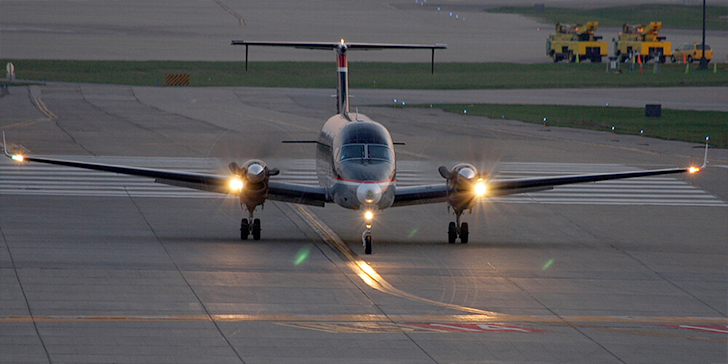 From March 23 through March 24, I attended the SAE A20 Aircraft Lighting Committee’s spring meeting in Fort Lauderdale, Florida. Discussion amongst the 36 attendees focused on recently published SAE documents, identification of documents that will be sent out for ballot shortly, and status of the MIL-STD-3009 specification review.
From March 23 through March 24, I attended the SAE A20 Aircraft Lighting Committee’s spring meeting in Fort Lauderdale, Florida. Discussion amongst the 36 attendees focused on recently published SAE documents, identification of documents that will be sent out for ballot shortly, and status of the MIL-STD-3009 specification review.
These meetings offer an excellent opportunity to have open dialog and discussion about new technologies and their impact to aerospace standards. In this article, I’ll share with you an overview of these topics, as well as discuss changes to the recently published document I sponsored, AIR5689 Light Transmitting Glass Covers for Exterior Aircraft Lighting.
Document Review and Revision Status
2 Documents Published:
AIR5689 Light Transmitting Glass Covers for Exterior Aircraft Lighting
Aircraft glass covers are produced using a highly specialized manufacturing process that is very different from the production processes used to create more common glass objects, such as kitchenware or window glass. The requirements of these applications differ, and as a result, have different quality criteria.
In early March, AIR5689 Light Transmitting Glass Covers for Exterior Aircraft Lighting was published to help create an appropriate understanding of the glass quality levels that should be expected for aircraft lighting lenses, given the unique nature of how they are manufactured. Lighting companies can use this document as a point of reference when communicating with their customers and setting expectations for acceptable quality levels and associated inspection criteria. This reference document is especially important for engineers new to aircraft lighting design as it provides a guide to what is generally acceptable.
As the document sponsor, I sought to ensure that the revised document included all relevant information related to visual inspection and evaluation criteria for molded glass covers used in exterior aircraft lighting applications. The revised document provides specific inspection criteria for five areas:
- Color
- Internal Quality
- Surface Quality
- Dimension
- Coatings
In addition to general text and terminology corrections, definitions for four surface quality evaluations were also added. The addition of these definitions will help inspectors to correctly identify features of the lens surface.
As the lighting landscape continues to become more competitive, designers must look for ways to differentiate their products while also designing affordable lens systems. By using this document during their design process, appropriate inspection criteria can be established upfront, which translates into savings for both the lighting company and their customer.
AS50571 Lights, Instrument, Individual, General Specification
AS50571 Lights, Instrument, Individual, General Specification was also recently approved by the committee and published. This standard, which applies to red and white cockpit lights, provides requirements for first articles, design and construction, performance, and cleaning.
This document is typically referenced for older aircraft retrofit projects. The driving reason for the revision was to address the PVC insulated wire specified in the document. The new version of the document allows for the use of a better type of wire that is more durable and does not emit noxious fumes.
Both of the recently approved documents can be purchased from SAE’s website.
3 Documents Ready for SAE Aerospace Council Approval and Publication:
Several documents, listed below, were voted on and approved by the SAE A20 committee. They will be published once approved by SAE’s Aerospace Council; the approval process typically takes less than a month.
- ARP6259 LED Replacement for Incandescent / Halogen Bulbs for Fluorescent Lamps
- AS7768 Light, Desk, Aircraft
- AS7768/1 Light, Desk, Aircraft
7 Documents Ready for the Ballot:
As a result of discussions at the meeting and the efforts of several document sponsors, there will be numerous documents going out for ballot soon, including:
- AS25050 Colors, Aeronautical Lights and Lighting Equipment, General Requirements
- ARP5637 Design and Maintenance Considerations for Aircraft Exterior Lighting Plastic Lenses
- ARP4168 Night Vision Goggle (NVG) Compatible Light Sources
- ARP4822 Night Vision Imaging System (NVIS) Compatible Illuminated Pushbutton Switches and Indicators
- ARP378 Passenger Reading Lights
- AS4914 Aircraft Fluorescent Lighting Ballast/Fixture Safety Design StandardARP5297 Recommended Qualification Tests for Halogen Miniature Lamps Less Than 35 Watts for Aircraft Applications
- ARP5297 Recommended Qualification Tests for Halogen Miniature Lamps Less Than 35 Watts for Aircraft Applications
MIL-STD-3009 Lighting, Aircraft, Night Vision Imaging Systems (NVIS) Compatible
Over the course of the two-day meeting, a separate collaborative working group met to review and provide feedback on the working revision of MIL-STD-3009 Lighting, Aircraft, Night Vision Imaging Systems (NVIS) Compatible. The working group first met after the fall meeting last year. Following that meeting, the group has been reviewing the document line by line; this is no small undertaking and will continue to be an investment of time and effort.
The working group will be conducting monthly teleconferences to monitor the group’s progress, and to share findings from their review. They will next meet during the 2016 fall meeting, which will be held in Long Beach, California.
Staying Aware of Technology Advances
Many of the documents that the SAE A20 Aircraft Lighting Committee has authored were written based on technologies that were available more than 30 years ago. This fact is always on our minds and is a frequent topic of discussion at meetings. We recognize that new documents may need to be drafted to address the latest technological advances. LED adoption is strong within the aircraft lighting market, and most new products—both interior and exterior—now incorporate LEDs.
LED usage in newer applications, such as for mood lighting, demonstrates the need to evaluate existing documentation and, if appropriate, to develop new documentation to guide their usage.
I encourage you to join SAE International and attend our next meeting, which will take place in Long Beach, CA from September 28th – 29th. If you can’t join, read our blog to stay abreast of the latest news and publications. I’ll continue to cover news and publications from the committee meetings.
Learn more about available documents and reference material on the SAE A20 Aircraft Lighting Steering Committee’s website.


